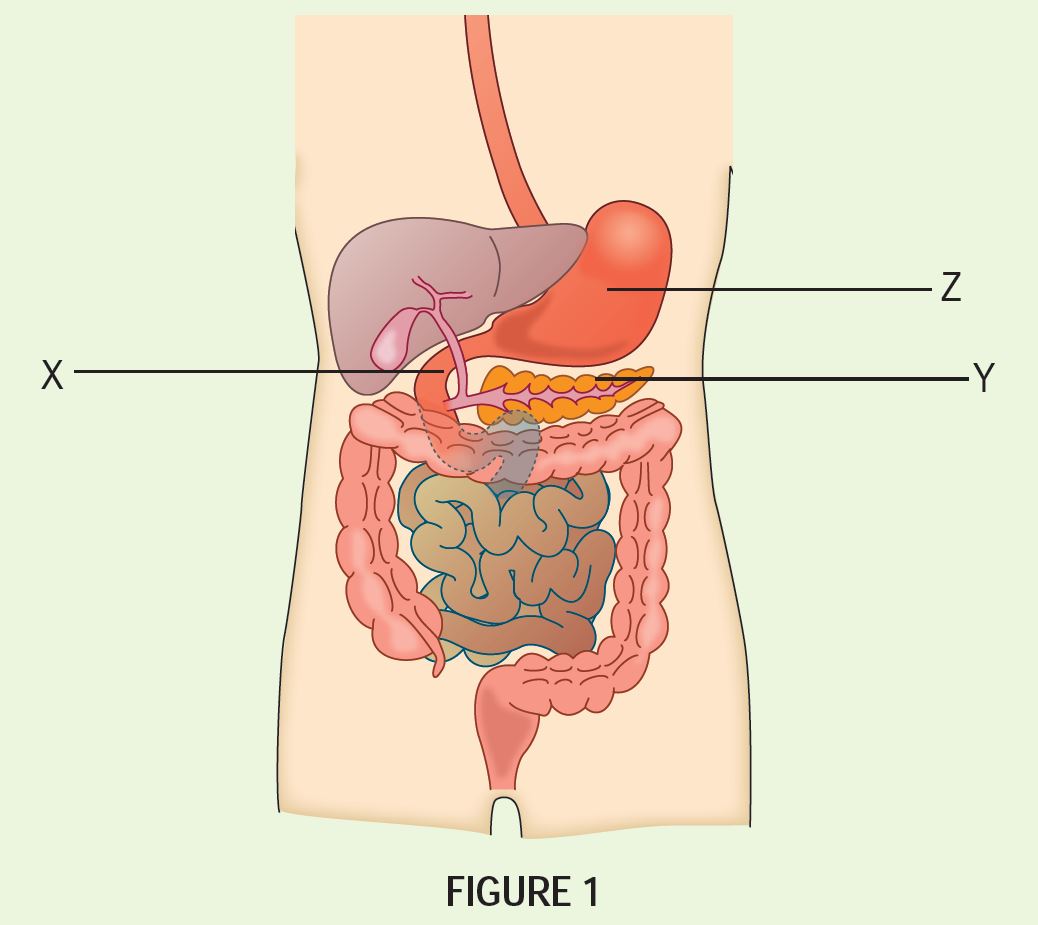Some people cannot drink milk because it causes diarrhoea and a bloated stomach. Explain why.
Answer:
The intestinal juice of the individual may possibly not contain or lacks lactase to digest milk sugar (lactose) in the small intestine. As a result, the bacteria in the large intestine will digest the lactose to yield fatty acids and methane which causes diarrhoea and bloating. The individual is advised to drink lactose-free milk.
Amin had some meat dishes for lunch. Explain how the protein is digested in Amin’s stomach.
Answer:
• The gastric glands in the stomach secrete gastric juice.
• Gastric juice contains hydrochloric acid and pepsin.
• The medium in the stomach is acidic and optimum for enzyme action.
• Protein is hydrolysed into polypeptides by pepsin.
An individual has the following eating habits:
Overeating in a short period of time followed by intentional throwing up on purpose after each meal.
Explain how this eating habit can affect the health of this individual.
Answer:
• The individual suffers from bulimia.
• To retain his/her body mass, the patient induces purging.
• The patient also experiences stress and anxiety.
• The patient suffers from an imbalance of mineral ions in the blood.
• This causes damage to the alimentary canal.
Figure 1 shows the alimentary canal in humans.

(a) Name structures X and Y.
(b)(i) The enzymes in X are only effective in an alkaline environment. Explain how an alkaline environment is maintained in X.
(ii) Explain how Y is involved in the digestion of carbohydrates in X.
(c) Name the enzyme found in Z. Explain how this enzyme functions in the digestion of proteins.
(d) A student enjoys eating a lot of oranges. Explain the effect of eating too many oranges on the digestion of starch in X.
Answer:
(a)
X: Duodenum
Y: Pancreas
(b)(i)
The bile and pancreatic juice are alkaline. These liquids help to neutralize the acids from the stomach.
(b)(ii)
Y secretes pancreatic juice that contains digestive enzymes into X. Pancreatic amylase hydrolyses starch to maltose.
(c)
Pepsin hydrolyses protein to polypeptides.
(d)
The acid in oranges reduces the pH value in the duodenum. This slows down starch digestion.